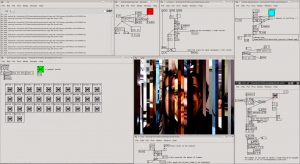27
03/12
10:08
self-portrait (2012)
The individual portrait was a Renaissance invention and it has been popular in visual arts since. Today, a portrait is still described by the stylistic rules of the Renaissance portraiture. In this kind of depiction we observe the subject either in profile or in frontal position; and his or her eyes, nose, and mouth are easily identified as such. We have an idea of how the governing elites of the courts of Florence and Venice looked because they had themselves portrayed. The purpose behind these depictions was always the same: to make the subject identifiable and recognisable as the ruler.
The advent of photography facilitated the production of portraits at an individual scale and made them portable. Nowadays, one of the primary devices for identification is the ID photograph that can be found in ID cards and passports. The style of these photographs is always the same: frontal position, lack of gestures and headdress, and neutral background. Contrary to the Renaissance, the portraitist, photographer, is not necessary as this style is embedded in the photo booth. This style allows to thoroughly measure the face of an individual. The distance between eyes, dimension and position of the nose, width of the mouth, height and breadth of the face, and all other sort of physical features are documented. The aim of this process is the certain identification of each particular person. The modern systems of control in public places like airports and government facilities largely depend upon the boring ID portrait.
